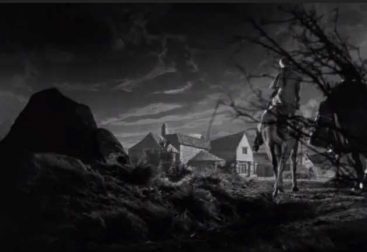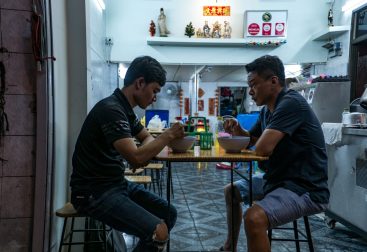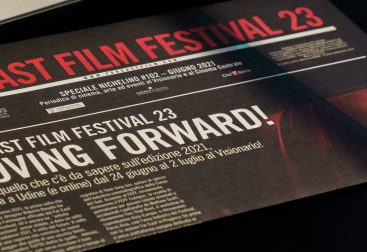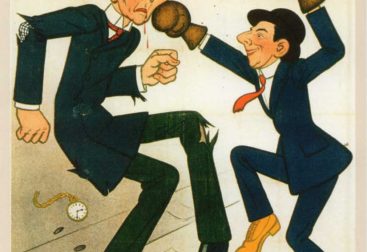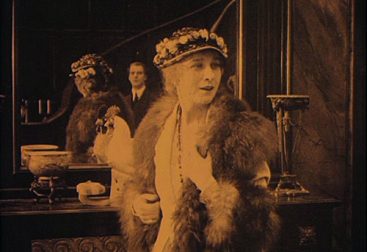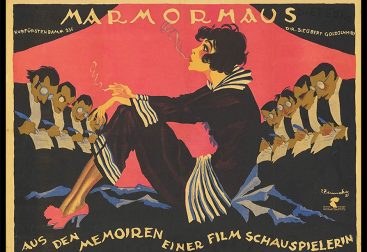This pandemic year 2020 is pushing intermediality very far, and very fast. Speaking of cinema and of the academic environment, of symposia, conferences and festivals, countless new exchange modalities are being experimented these days. Though this has been generally driven by the global emergency status, it must be said that there is also a widespread, mostly untold, sense of curiosity about this experimentation trend. If one removes just for a second the cause behind the sudden expansion of the digital, it is indeed fascinating to dis-cover new forms of interconnection and, generally, new potentialities. But where does this potential lead to?
I want to consider here a peculiar case: that of film festivals and, more specifically, that of silent film festivals. If you are reading these lines, you might already be familiar with the fact that the so-called silent era of the history of cinema has never really been silent. While shooting the so-called “silent films”, actors and actresses were actually speaking, as one can normally make out from the movement of their lips; what happened, is that their sounds were produced, though not recorded. Moreover, cinemas were far from being silent: sounds, voices, noises and music were always present, even and especially during the projections.
At the end of 1929, when sound was still a promising though work-in-progress technology, the French screenwriter and director of Pour Vous Alexandre Arnoux wrote an article titled: “Le cinéma muet n’a pas dit son dernier mot” (silent cinema has not said its last word). And here we are, with still lots to say about these first decades of the history of the seventh art and celebrating the silent film era with several yearly events worldwide. Among these, a major role is played by the Giornate del Cinema Muto di Pordenone, held annually in northern Italy and now in its 39th edition.

In the interests of public health and safety, the Giornate del Cinema Muto 2020 are a limited online edition, as are many other cultural events in this period. I am personally following all events on my laptop, starting from the screening in the evenings, and passing on to the Masterclasses and the Book presentations in the afternoons from Saturday 3rd till Saturday 10th of October. A special characteristic of this festival is that there are no simultaneous screenings, thus avoiding the risk of spectators each having their own festival (see “Ein Tag im Leben eines Festivalbesuchers” by Felix-Schaulust here in Sinn und Cinema).
Now, I won’t go through the program in details, but rather think about this experience per sé and about the concepts that define it. In the end, as often pointed out by the Giornate’s director Jay Weissberg throughout the Festival: “It is a new world for all of us”.
I have been asking myself what the advantages and disadvantages of digital (silent) film festivals are. In this respect, the concepts of arrêt et répétition, largely theorized by Bazin and by Agamben, immediately come to mind: when watching or following a film festival online, indeed, the viewer is given a very peculiar power, that of being able to stop, restart, and possibly even repeat all or part of the screening experience – which is something that definitely influences your focus and your dedication to the very instant of the screening. If one knows, more or less consciously, that a specific experience can be repeated, your focus is automatically altered. What makes festivals special events is the fact that they are unique. Recording technologies might have altered this idea, of course, but not in the specific case I am referring to: that of silent film festivals, which regularly include also live-music performances. And that is something one can’t repeat despite all the recordings in the world.
Consequently, I would like to stress that I voluntarily refused to repeat the GCM’s events, although they are available for 24 hours after the first stream. And, I must admit, I would have liked to use this “power” sometimes, especially to re-watch some film sequences or some parts of the interesting debates that followed the films.
In this respect, one comment in particular struck me. It is when the pianist Serralde Ruiz, who played the musical accompaniment for the very first screening titled “Voglia di viaggiare”, was asked about his experience. He said that the novelty surprised him and he added that he was not sure about the outcome of his performance because, and I quote, “I can’t hear them laughing!” – referring to the audience.

For a silent film festival, indeed, the physical presence appears to be not only important, but essential. In addition, it is through silent film festivals – and film festivals in general, I would say – that cinema once again reveals its social essence: “le cinéma comme invention sociale et pratique culturelle” (cinema as social invention and cultural praxis) (Rick Altman: Vingtième Siècle, 1995). In our digital era, with the recent explosion of digital film platform and especially now during this period of widespread lockdowns, it is important to point this out and keep it in mind.
However, a coin always has two sides, and of course not everything is negative about this (hopefully temporary) “digital turn” of film festivals. I believe that the main advantages can be summarized in one concept: accessibility. A film festival is normally something that happens in a limited time-frame, in a precise place. Despite this generally constant feature, one can’t be always sure to be able to attend and there can be many variables which influence the possible attendance for each individual. The pandemic the world is facing is probably the worst-case scenario, in this sense, as it influences all spectators and the organization as well. The fact that the GCM could “take place” online has not only assured the continuity of the festival (though in a different formula); as a side-effect, it has also allowed a wider accessibility than usual, especially in a geographical sense. These days, it makes no difference if you’re in Pordenone, in Italy, in Europe, or on the other side of the planet. As long as you have a Wi-Fi connection and an accreditation, you have the festival as well.
One could also focus on the exclusivity of the festival experience but, for now, I prefer to conclude my thoughts with a personal remark: I am glad the Giornate could successfully switch to this limited online edition and I believe it was the wisest choice. But still, when I turn off the lights in my room, I set the speakers and sit in front of my laptop, something strikes me. It is not the small screen, nor the recorded music – though they are also excellent candidates. No.
What strikes me, paraphrasing, is that I can’t hear them laughing either.
I can read some comments in the live chat, but basically, I am alone in front of the screen. And the social essence of the film experience is inevitably missing.
Maria Adorno
Photo on top: La Tempesta in un cranio (Campogalliani, IT 1921)
_______________________________________________________________________

Im Interesse der öffentlichen Gesundheit und Sicherheit, wurden die Giornate del Cinema Muto 2020 als begrenzt zugängliche Online-Edition organisiert, vergleichbar vielen anderen kulturellen Veranstaltungen in dieser Zeit. Ich persönlich habe mir alle Ereignisse auf meinem Laptop angeschaut: Die Vorführungen am Abend, sowie die Masterclasses und die Buchpräsentationen nachmittags vom Samstag 3. bis Samstag 10. Oktober. Nur als kleine Anmerkung: Ein besonderes Merkmal dieses Festivals ist, dass es nicht mehrere Vorführungen gleichzeitig gibt, wodurch die Seltsamkeit, dass die Zuschauer jeweils ein eigenes Festival erfahren, vermieden wird (siehe „Ein Tag im Leben eines Festivalbesuchers“ von Felix-Schaulust hier auf Sinn und Cinema).
Im Folgenden werde ich das Programm nicht im Detail durchgehen, sondern über diese Erfahrung per se und über die Konzepte nachdenken, die sie definieren. Am Ende, wie der Direktor der Giornate Jay Weissberg während des Festivals oft betonte: „It is a new world for all of us” (Es ist eine neue Welt für uns alle).
Ich habe mich gefragt, welche Vor- und Nachteile digitale (Stumm-)filmfestivals haben. In dieser Hinsicht tauchen die Begriffe von „arrêt et répétition“ (Anhalten und Wiederholung), die von Bazin und Agamben ausführlich theoretisiert wurden, sofort in meinem Kopf auf: Wenn man ein Filmfestival online anschaut oder verfolgt, erhält der Zuschauer tatsächlich eine ganz besondere Möglichkeit, nämlich die Fähigkeit, das Screening-Erlebnis ganz oder teilweise anzuhalten, neu zu starten und möglicherweise sogar zu wiederholen – was den Fokus und das Engagement des Zuschauers für den Moment des Screenings stark beeinflusst. Wenn man (mehr oder weniger bewusst) weiß, dass eine bestimmte Erfahrung wiederholt werden kann, wird der Fokus automatisch geändert. Zu besonderen Ereignissen werden Festivals gerade durch ihre Einmaligkeit und ihre Einzigartigkeit gemacht. Aufnahmetechnologien könnten diese Idee natürlich beeinflusst haben, aber nicht in dem speziellen Fall, auf den ich mich beziehe: Dem von Stummfilmfestivals, zu denen normalerweise auch Live-Musik-Performances gehören. Und das kann man trotz aller Aufnahmen der Welt nicht wiederholen.
Infolgedessen möchte ich hier betonen, dass ich mich dazu entschieden habe, die Screenings der GCM keinesfalls zu wiederholen, obwohl sie nach dem ersten Stream 24 Stunden lang verfügbar waren. Ich muss ebenfalls zugeben, dass ich diese „potentielle Möglichkeit“ manchmal gerne genutzt hätte, insbesondere um einige Filmsequenzen oder Teile der interessanten Debatten, die den Filmen folgten, noch einmal anzusehen.
In dieser Hinsicht gibt es eine Aussage, die meine Aufmerksamkeit besonders auf sich zog: Der Pianist Serralde Ruiz, der die musikalische Begleitung für die allererste Vorführung mit dem Titel „Voglia di viaggiare“ spielte, wurde nach seiner Erfahrung gefragt. Er erklärte, dass die Neuheit ihn überrascht hätte und meinte auch, dass er sich über das Ergebnis seiner Aufführung nicht sicher sei, denn, ich zitiere, „I can’t hear them laughing!“ (Ich kann ihre Lacher nicht hören) – bezogen auf das Publikum.

Für ein Stummfilmfestival scheint die physische Präsenz der Zuschauer und Zuschauerinnen also nicht nur wichtig, sondern auch wesentlich zu sein. Durch Stummfilmfestivals – und Filmfestivals im Allgemeinen, würde ich sagen – offenbart das Kino seine soziale Essenz erneut: „Le cinéma comme invention sociale et pratique culturelle“ (das Kino als soziale Erfindung und kulturelle Praxis) (Rick Altman: Vingtième Siècle, 1995). In unserem digitalen Zeitalter ist es angesichts der aktuellen Explosion der digitalen Filmplattformen und insbesondere jetzt in dieser Zeit diffuser Lockdowns wichtig, darauf hinzuweisen und dies zu berücksichtigen.
Eine Münze hat aber immer zwei Seiten, und natürlich ist nicht alles negativ an dieser (hoffentlich vorübergehenden) digitalen Wende der Filmfestivals. Ich glaube, dass die wesentlichen Vorteile in einem Konzept zusammengefasst werden können: Zugänglichkeit. Ein Filmfestival findet normalerweise in einem begrenzten Zeitraum an einem bestimmten Ort statt. Trotz dieses im Allgemeinen konstanten Aspektes, kann man nicht immer sicher sein, teilnehmen zu können, und es kann viele Variablen geben, die die potenzielle Teilnahme für jeden Einzelnen beeinflussen. Die Pandemie, mit der die Welt konfrontiert ist, ist in diesem Sinne wahrscheinlich das Worst-Case-Szenario, da alle Zuschauer und Organisationen gleichzeitig betroffen sind. Dass die GCM online „stattfinden“ konnten, hat nicht nur die Kontinuität des Festivals gesichert (wenn auch in einer anderen Format); Als Nebeneffekt hat es auch eine breitere Zugänglichkeit als üblich ermöglicht, insbesondere im geografischen Sinne. Heutzutage spielt es keine Rolle, ob man in Pordenone, in Italien, überhaupt in Europa oder auf der anderen Seite des Planeten ist. Solange man über eine Internet-Verbindung und eine Akkreditierung verfügt, ist das Festival zugänglich.
Man könnte sich weiter auf die Exklusivität der Festivalerfahrungen konzentrieren, jedoch möchte ich jetzt meine Gedanken lieber mit einer persönlichen Bemerkung abschließen: Ich freue mich darauf, dass die Giornate del Cinema Muto erfolgreich in dieser limitierten Online-Edition stattfinden konnten, und ich glaube, dass es die klügste Wahl war. Aber trotzdem, wenn ich das Licht in meinem Zimmer ausschalte, die Lautsprecher aufstelle und mich vor meinen Laptop setze, fällt mir etwas auf. Es ist weder der kleine Bildschirm noch die aufgenommene Musik – obwohl die sehr wohl dafür in Frage kämen. Nein.
Was mir auffällt ist, paraphrasiert, dass auch ich das Lachen nicht hören kann.
Man kann einige Kommentare im Live-Chat lesen, aber im Grunde sitze ich alleine vor dem Bildschirm. Und die soziale Essenz des Filmerlebnisses fehlt unweigerlich.
Maria Adorno
Titelfoto: La Tempesta in un cranio, Regie: Campogalliani, Italien 1921


